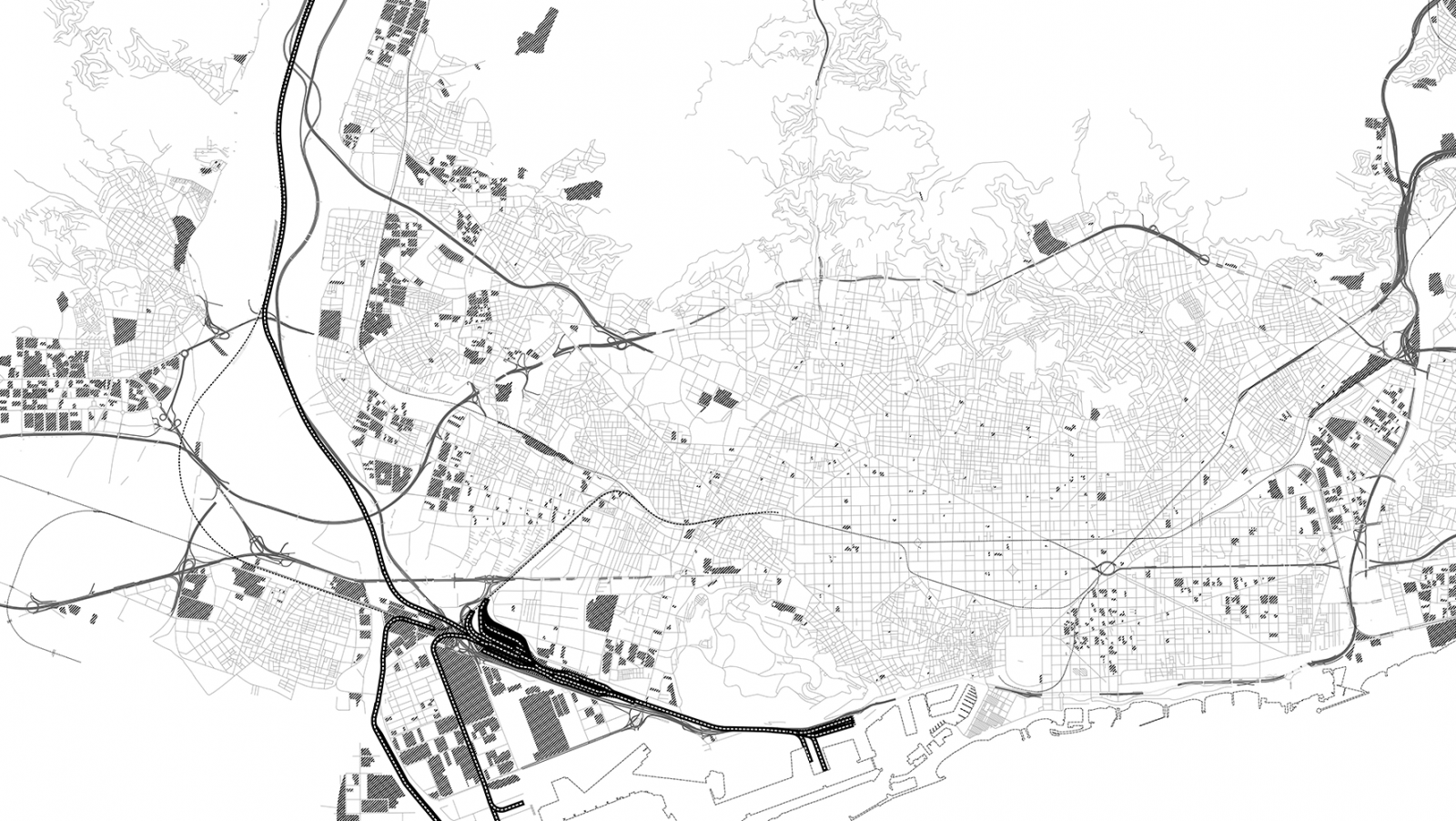The definition of the new metropolitan mobility model has been one of the central points in the new Metropolitan Master Plan drafting. In 2014, we have been involved in the preliminari diagnosis to update the plan for a region formed by Barcelona and 35 other municipalities around.
The objectives of the previous territorial planning, dating back to 1976 (a time of social and economic development), have become obsolete under the current climate change and depletion of territorial resources. In this 40-year period, mobility has changed from a systematic to an erratic approach, from being driven by work reasons to operating with leisure and care reasons. Today, we find ourselves in a scenario of multiple operators where simulation models must attempt to size both the infrastructure and the mixtures of uses of the fabrics that generate the demand.
The analysis havs been segmented based on different thematic axes: demographic evolution and prospecting, economy and new activities, metropolitan metabolism, ecosystem services (green and blue infrastructure), and dynamic functioning of the metropolis. From this perspective, the new Master Plan (currently in preliminary approval) has as its fundamental vector the balance with the territory and the creation of different metropolitan centralities, with mobility being a transversal aspect that interweaves the analysis to achieve these two main objectives.
It is also important to emphasize that this project is one of the first experiences in Spain of using big and open data to elaborate analysis and its respective conclusions and incorporate them into a territorial planning document. Thus, for the first time, structured data series (demographic statistics, cadastre, etc.) have been used together with other unstructured data (social networks, traffic operator data, etc.) to generate high-value knowledge -still used today for decision-making.
Specifically, in the field of mobility, we explored how fast-paced changes in transportation make it necessary to understand the existing infrastructure and how it can be improved to promote a more sustainable model of mobility. This model should be based on the benefits of compact urban morphology, the public transport offer, increased walking and cycling, fare integration policies and intermodality.
Images
Promoters

